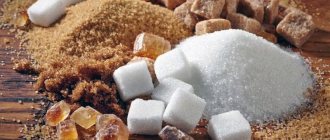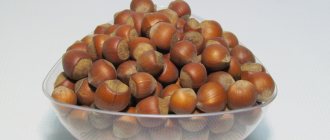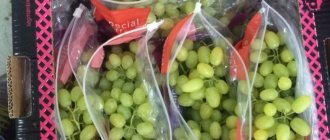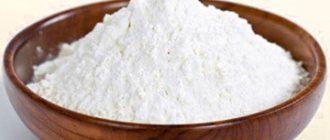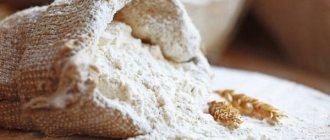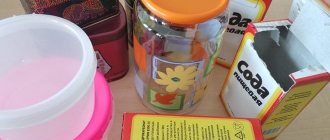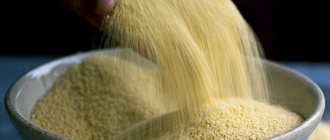Proper storage of Chinese tea is the key to preserving its rich taste, unique aroma and quality for a long time. What kind of dishes or containers should you use to store tea and what is the best way to store it? More on this later.
Tea is on the first line of the Russian and international rankings of the most frequently consumed drinks. It has a large amount of antioxidants to combat stress and prolong youth. In addition, it is simply a pleasant drink, which Russians drink even more often than the British.
To retain its taste, aroma and benefits, you need to learn how to properly store tea at home. Dried tea leaves absorb moisture from the air and lose their original characteristics. As a result, the entire product spoils. Therefore, it is so important to know all the nuances: temperature conditions, how long tea can be stored and what storage container to choose.
How to store tea correctly: the basics
First of all, we will talk about storage conditions: how long to store tea, at what temperature and other important information. The shelf life of Chinese tea in your home will depend on these nuances.
Minimum humidity
The tea drink, regardless of the type, should be kept in a room with a humidity level not exceeding 30-40%. When opening a jar or other container, the leaves absorb water. Over time, they deteriorate and smell unpleasant.
You can organize the storage of tea in small portions in small containers. Package the product packaging into tubes consisting of several compartments. Then each batch will have less contact with air.
Different types of tea react to humidity in their own way. Black and pressed leaves absorb moisture more. Green and loose varieties are least susceptible to moisture.
Expensive and high-quality varieties do not deteriorate relatively longer in humidity. The more complete the leaf surface, the less moisture it contains. For example, black tea contains up to 7% moisture, and green tea contains 5%. When the humidity reaches 8%, the drink becomes more sour and begins to lose its taste and aroma. For this reason, it is worth choosing more carefully in which container you will store your tea.
Darkness
Sunlight is a powerful oxidizing agent for seagulls. The sun destroys the leaves, deteriorates their taste and beneficial qualities. In addition, it affects their color. If they are exposed to light for a long time, they begin to fade. If you do not have dark places to store tea leaves at home or in an establishment, use dense containers that are not capable of transmitting sunlight.
Temperature
Tea storage, like coffee storage, should ideally be organized at a temperature of 0 to 18 degrees. When creating a warmer room, it is possible to continue fermenting green tea bags and regular black tea. As a result, white or green will quickly deteriorate. This is not a big deal if you brew the drink every day or more often. Because you will use it before it becomes unusable.
Choose a tea storage box that is located far from the stove, oven, radiator and other heat sources.
It is worth pointing out that thanks to the cool temperature, the shelf life of green tea and others will be extended. Correctly selected temperature for storing tea can inhibit various pathogenic factors in the development of microorganisms.
How long and how much loose leaf tea can be stored in bags in company packaging or other containers in the kitchen will depend on other factors. Manufacturers usually write storage conditions on the original packaging.
Interestingly, the best containers for loose leaf tea in the kitchen are tea storage drawers, and the best place is the refrigerator due to temperature and lack of light. This answers the popular question of whether tea can be stored in the refrigerator.
Foreign odors
The refrigerator is a great place to store tea and coffee. However, there is a BUT. There are a lot of flavors in this place. The leaves will absorb them if you use a tea jar with a loose lid.
When storing tea in the refrigerator, choose jars with a sealed silicone seal between the neck and lid. It will ensure the safety of the leaves and prevent unnecessary odors from reaching them.
Fragrances are produced not only for food products, but also for plastic with spices, perfumes and household chemicals. If you decide to use containers that have contained other products, make sure they are clean. Wash them thoroughly in hot water.
Packaging tightness
Tightness is needed to retain beneficial and flavorful properties and protect from the external environment. First of all, it is necessary when storing tea with strong-smelling products, such as spices. Thanks to proper packaging, you can extend the shelf life of green tea and any other tea.
Protection against strong odors
Tea is very vulnerable to the effects of strong aromas, since the tea leaf perfectly absorbs odors. Sometimes this is useful in the production of certain varieties - for example, Jasmine Dragon Pearl green tea, the leaves of which are very easily and quickly imbued with the scent of jasmine flowers. But this also means the need to create special storage conditions at home - containers with tea should not be kept near sources of strong odors, such as refrigerators, stoves with cooking dishes, garbage cans and other strong-smelling places. And, of course, it is absolutely unacceptable to keep tea leaves in the same cabinet with spices.
Storage conditions for different types of tea
There are many varieties of tea - black, green, red, yellow, white, pu-erh, oolong, sencha, herbal and others. Many years of experience of producers and ordinary people suggests that the basic storage rules are no different for different varieties:
- Cool room,
- Low humidity
- Sealed packaging,
- No direct sunlight,
- No pungent odors.
When choosing where to store tea at home in the kitchen, look for a place that meets these conditions. Most likely, it will be a closed box away from the stove and heating devices, specially reserved for tea and coffee.
Can tea be stored in the refrigerator and freezer?
Storing tea in the refrigerator, on the one hand, is suitable for temperature conditions. But most importantly, the humidity in the refrigerator is much higher than necessary. Therefore, storing tea and tea leaves in the refrigerator is not recommended.
As for storing in the freezer, it is more suitable for long-term storage of herbs. By collecting fresh herbs in the summer and freezing them, you can pamper yourself with a bright and unusual taste all year round. You can do the same with berries, which will further take your tea drinking to a new level.
What else is important to consider
These are general requirements for cookware. But it is worth considering that room temperature is acceptable for storing red (black), pu-erh and aged varieties of oolong tea, the degree of fermentation of which is close to red. But white and green should be kept at a temperature of +5 °C. Oolong of weak fermentation is generally in the freezer.
And don’t forget that all types of tea, except pu-erh, have a short shelf life, so you shouldn’t stock up on them for more than 2-3 months. Choose tea jars and places for them according to the requirements of a particular type and enjoy your favorite aromatic drink.
What is the shelf life of tea?
How long tea can be stored is determined by the manufacturer on the packaging. This is especially true for tea bags and pyramids. But if you still have the packaging from the sheet type, then also pay attention to this information on it.
Cut out the expiration date for Chinese tea from the original packaging before transferring the tea to a jar or other container. Stick it on the jar or put it inside. This way you will always know how long you can store your type of tea.
After the expiration date, the tea can be consumed, but it will no longer please you with its bright taste. Loose tea can be stored for the following period:
- Black tea up to one and a half years (1.5 years),
- Green tea up to six months (0.5 years),
- Oolong up to one year (1 year),
- Herbal tea up to one and a half years (1.5 years),
- Pu'er up to a decade (10 years).
The average shelf life of loose leaf tea of any variety is 1 year.
Whatnot
Another example of vertical storage. The shelf takes up a small space, but you can fit everything you need on it. It also fits well into any interior and helps save work space.
Jars and utensils for storing tea at home
Choosing a suitable container will be the key to effective storage of tea in bags or loose leaves. What is important to pay attention to:
- Size,
- Light transmittance
- tightness,
- Material.
When answering the question in which container is best to store tea, it is worth pointing out that dishes made of porcelain, ceramics, glass and tin tubes are suitable for this. Such containers will provide excellent storage conditions, which will help the leaves of black, green, white, red and any other tea variety retain their properties.
The most suitable tableware options for storing tea are ceramic jars and tin cans. They do not allow light to pass through, and usually have a good seal - what is needed for proper storage.
In specialized stores you will find special porcelain teapots for storing tea. They already have all the necessary qualities for such dishes. The main thing is that they have a cool design in ethnic or modern style.
If you'll be using a drawer for storage rather than open shelves, glass jars will also work. Make sure that their lid fits tightly to the jar itself and does not let air through. When choosing specialized boxes, also pay attention to their tightness. Unlike glass jars, it can also be stored on open kitchen shelves or in the living room.
Avoid fabric, paper and cardboard boxes and containers. Typically, they are the second packaging in which manufacturers ship their products. In addition to it, you will definitely find a sealed foil package inside. After opening it, pour the tea into a more suitable container.
Cardboard box for black tea, plastic containers for Chinese tea, paper, cloth and cardboard for loose tea are poor options. You need to carefully choose a storage location for them. But this option may be suitable if you plan to consume the drink within a month.
Is it possible to store tea in a tin?
You can store tea in a tin can, but provided that it is sufficiently airtight. In addition, it is easier to select and buy such a jar than other types of storage containers.
Is it possible to store tea in a glass jar?
Storing tea in a glass jar is possible only if two conditions are met:
- Firstly, the lid fits tightly to the vessel, which creates a tight seal.
- Secondly, you store the jar itself in a dark box, out of direct sunlight.
How to store herbs for tea
Orange peels for tea, herbs picked in summer and other additives are also recommended to be stored in airtight containers. Humidity and lack of sunlight are also important for them. But if you are a hobbyist and use them very often, then don’t worry, they won’t deteriorate even in cardboard boxes.
Multi-tiered stand
Vertical storage is one of the best ways to save space. You can place not only several jars on the stand, but also sugar, honey, sweets, and cookies. Another advantage of a multi-tiered stand is mobility. You can have a tea party in the living room or on the veranda by simply moving the stand there.
How to handle tea correctly
Such an exquisite drink requires an appropriate attitude. First of all, do not apply tea with your hands. To put the tea leaves into the teapot, use a spoon and or a wooden spatula. This experience will create a special mood for your tea ceremony.
Also, you should not compact the tea leaves. If you transfer them to storage containers and force them to the bottom, this will cause damage and quickly dissipate the aroma. Loose tea, in this case, will change the taste, regardless of how long you plan to store the tea leaves, in a glass jar or other container and at what temperature.
When purchasing, pay attention to the assembly date and shelf life of the tea indicated by the manufacturer. Obviously, fresh tea with a long date will last much longer.
Moisture protection
Humidity is the worst enemy of tea and can ruin an entire batch in just a few minutes. Dried tea leaves are considered quite shelf stable precisely because they are completely dry. But, unfortunately, they absorb moisture from the air at an amazing speed.
Therefore, it is very important to store your tea supplies away from sources of moisture, for example, you should not place a container with dry leaves in the refrigerator, on a shelf above the dishwasher, or, especially, above the sink, where steam rises from hot water.
Tea should be kept as far away from moisture as possible until you are ready to brew it, otherwise excess moisture can cause your supplies to turn into a damp briquette with an unpleasant odor and other dismal consequences.
You might be interested in How to care for tea utensils
It should be noted that these rules are by no means absolute; as they say, there are exceptions to every rule, for example, pu-erh.
Mistakes of storing tea in the kitchen
The shelf life is sharply reduced if you use unsealed glass jars or plastic containers for storing tea, which are placed on open kitchen shelves. Such containers are subject to two negative influences at once:
- Exposure to sunlight
- Penetration of kitchen odors into the jar.
Another mistake is using a tea box to store tea. The fact is that you risk that the leaves will become saturated with the smell of paint, varnish or wood. Its use is only possible if you place sealed containers inside.
If you do not want to create your own signature tea mix, then keep each variety in its own container, avoiding mixing them.
What to do if the storage conditions for tea were violated and it spoiled?
If the main conditions of how to store Chinese tea or how to store herbs for tea have been violated, you should use it differently. For example, it can be a good flavoring or deodorizing agent. However, you should not allow it to spoil and think in advance about what to store loose leaf tea in and how long it can be stored.
Clay or porcelain containers
The best option for connoisseurs of beautiful and long tea parties in pleasant company. Clay and porcelain jars look aesthetically pleasing and presentable. These jars can be kept right on the dining table.
